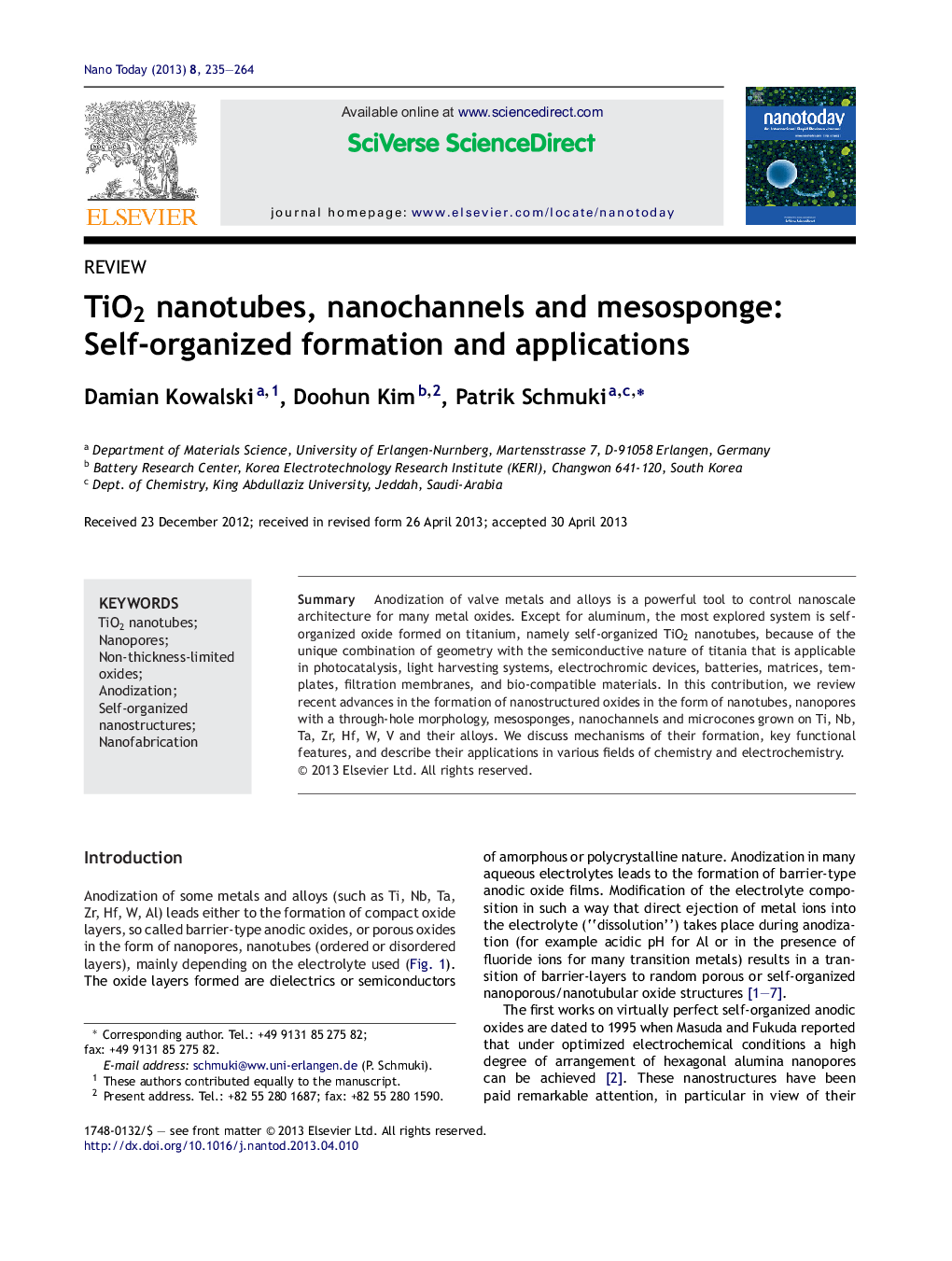| Article ID | Journal | Published Year | Pages | File Type |
|---|---|---|---|---|
| 32116 | Nano Today | 2013 | 30 Pages |
•A review on self-organized oxide nanostructures formed by anodization.•Fabrication on metals and alloys such as Ti, Ta, Nb, W, V, Zr and Hf.•Self-organized morphologies: Nanotubes, mesosponges, microcones, nanochannels, and nanopore arrays with a through-hole morphology.•Applications of nanostructures: photocatalysis, light harvesting systems, electrochromic devices, batteries, matrices, templates, filtration membranes, and biocompatible materials.
SummaryAnodization of valve metals and alloys is a powerful tool to control nanoscale architecture for many metal oxides. Except for aluminum, the most explored system is self-organized oxide formed on titanium, namely self-organized TiO2 nanotubes, because of the unique combination of geometry with the semiconductive nature of titania that is applicable in photocatalysis, light harvesting systems, electrochromic devices, batteries, matrices, templates, filtration membranes, and bio-compatible materials. In this contribution, we review recent advances in the formation of nanostructured oxides in the form of nanotubes, nanopores with a through-hole morphology, mesosponges, nanochannels and microcones grown on Ti, Nb, Ta, Zr, Hf, W, V and their alloys. We discuss mechanisms of their formation, key functional features, and describe their applications in various fields of chemistry and electrochemistry.
Graphical abstractFigure optionsDownload full-size imageDownload high-quality image (162 K)Download as PowerPoint slide
